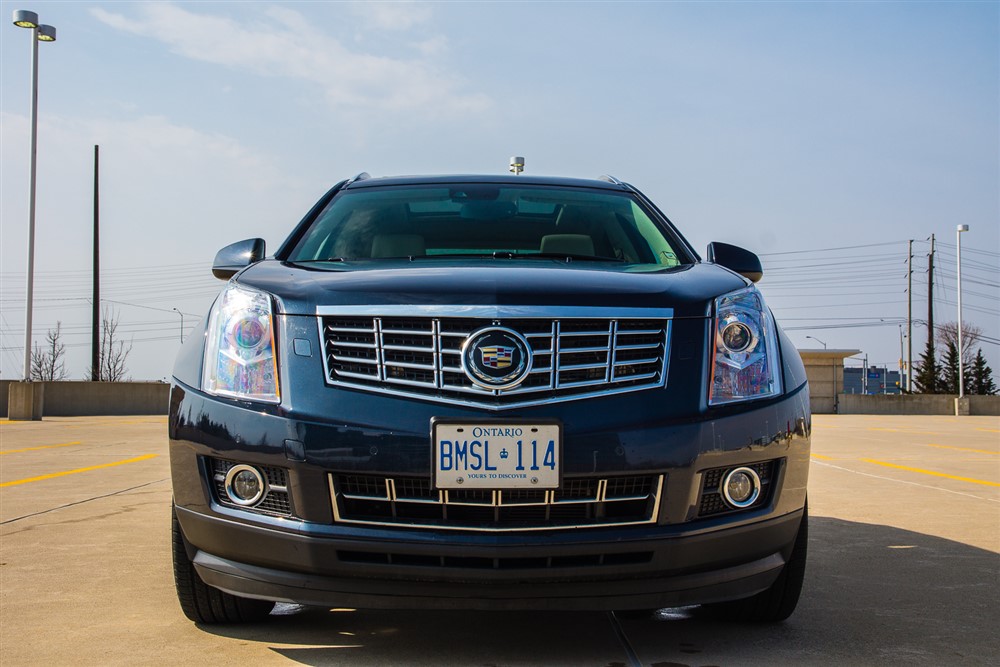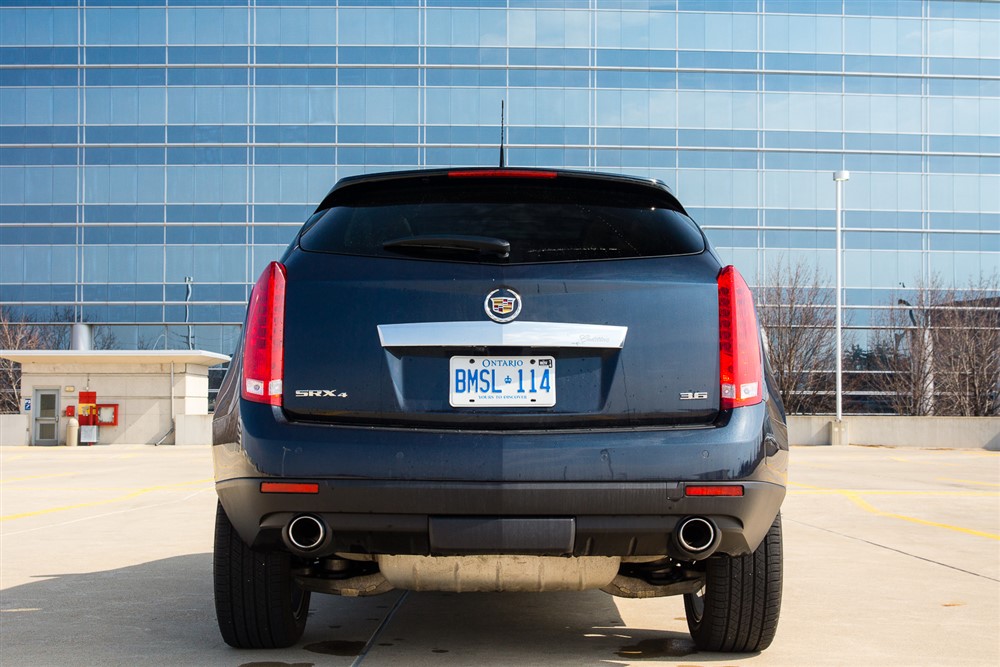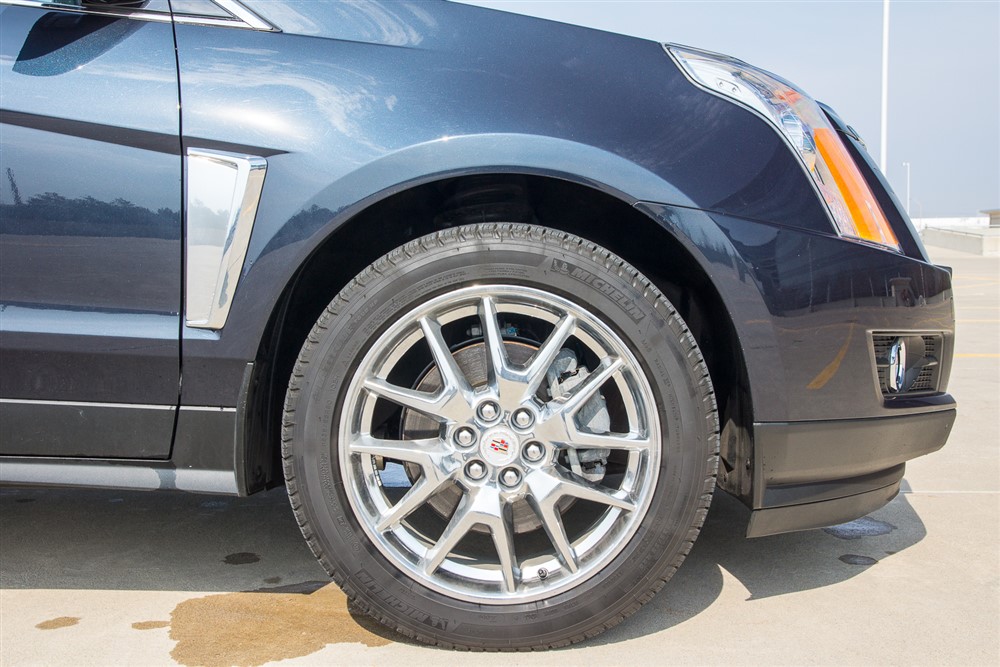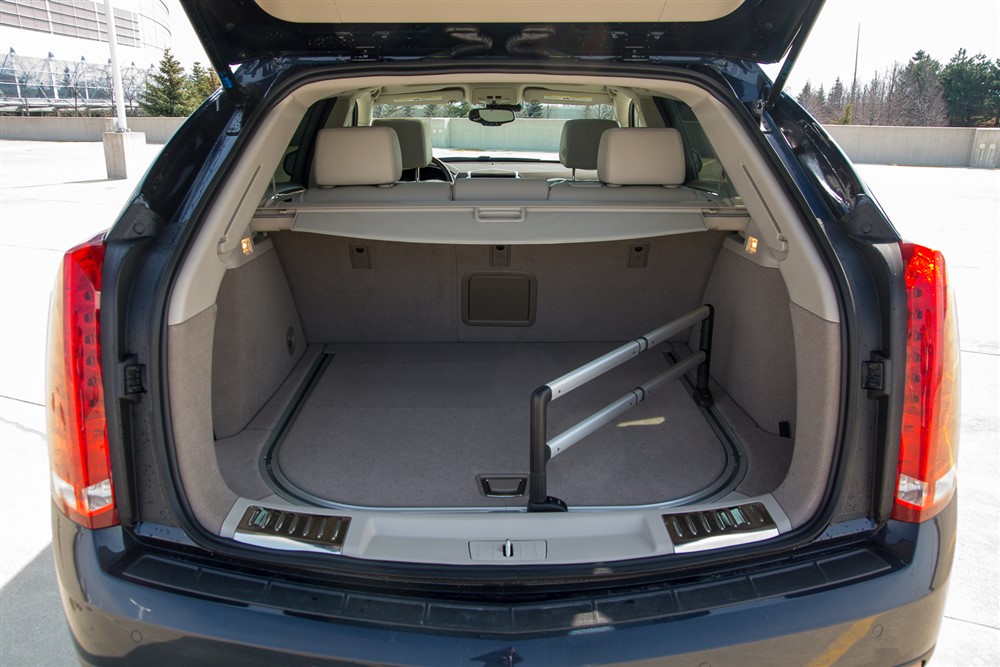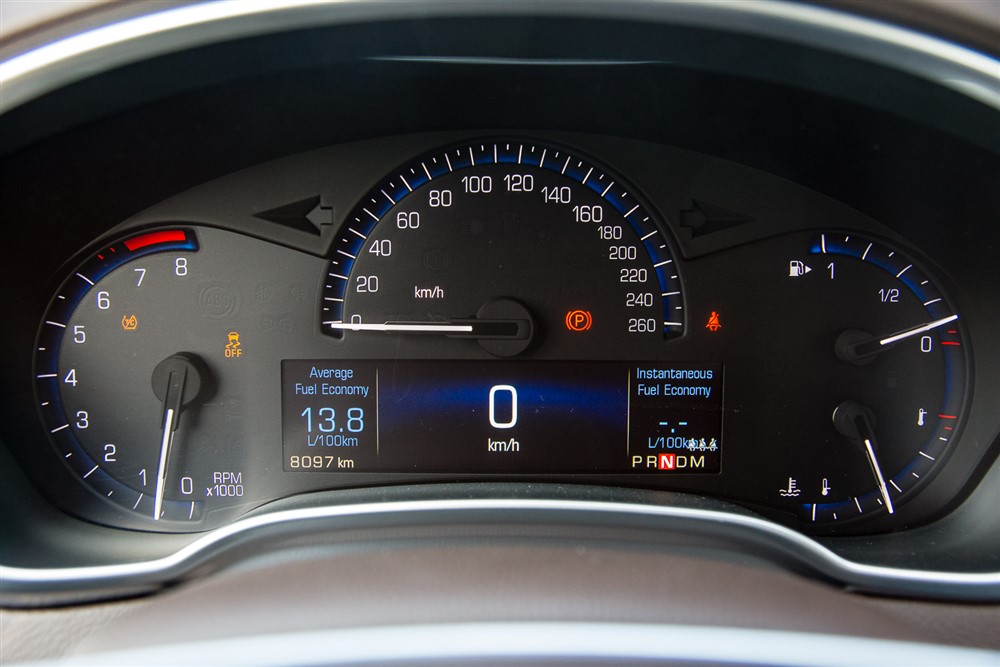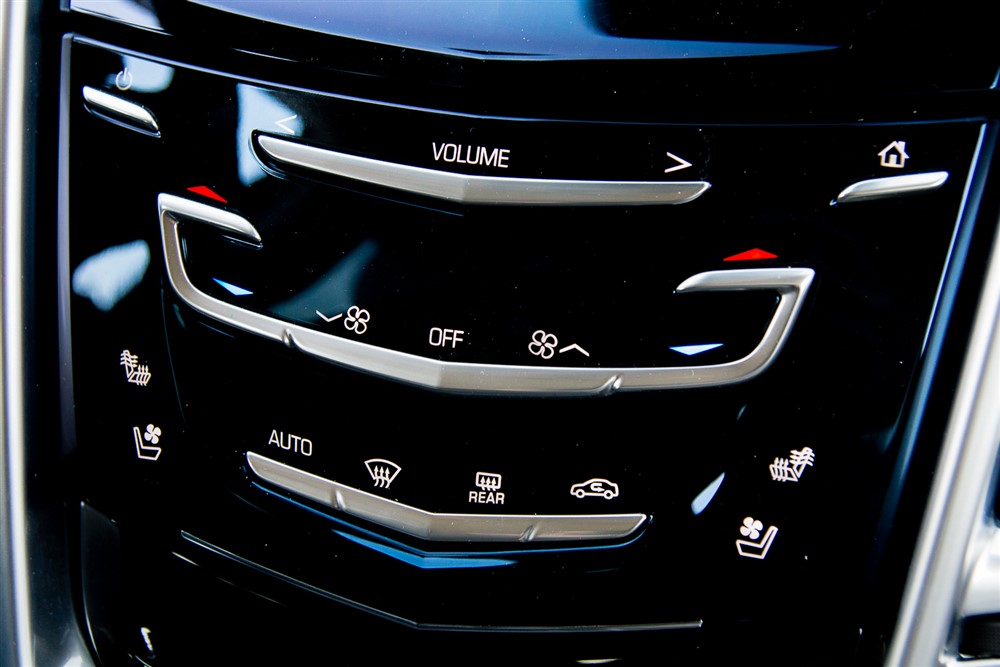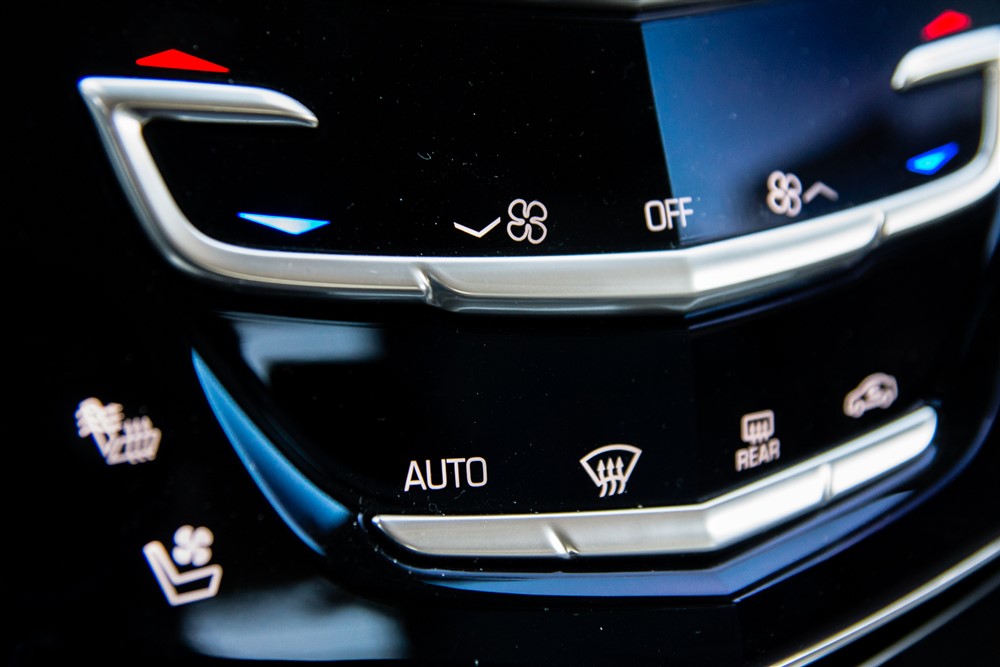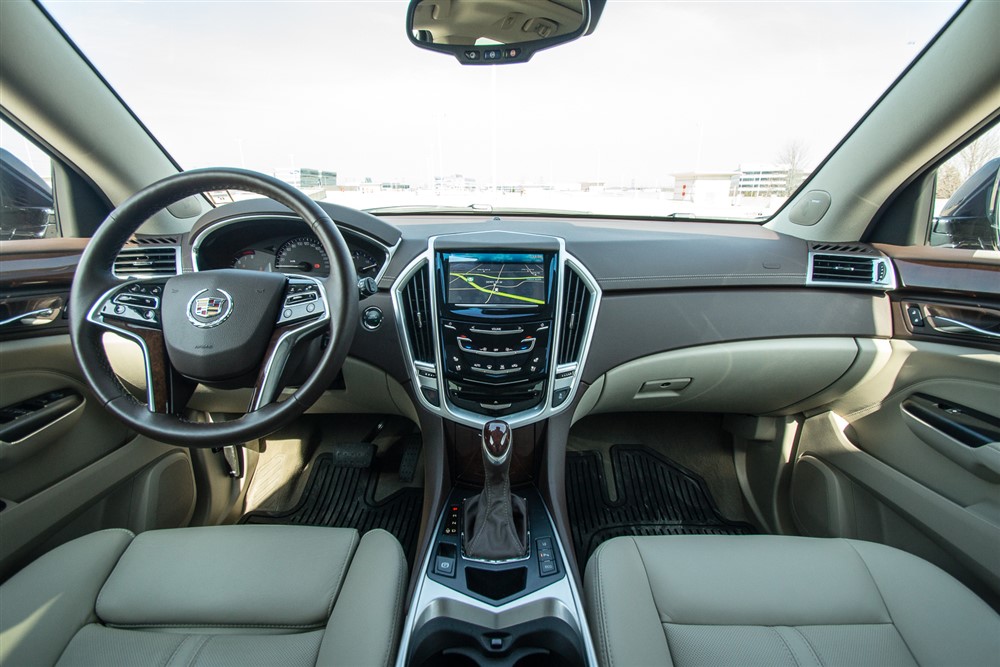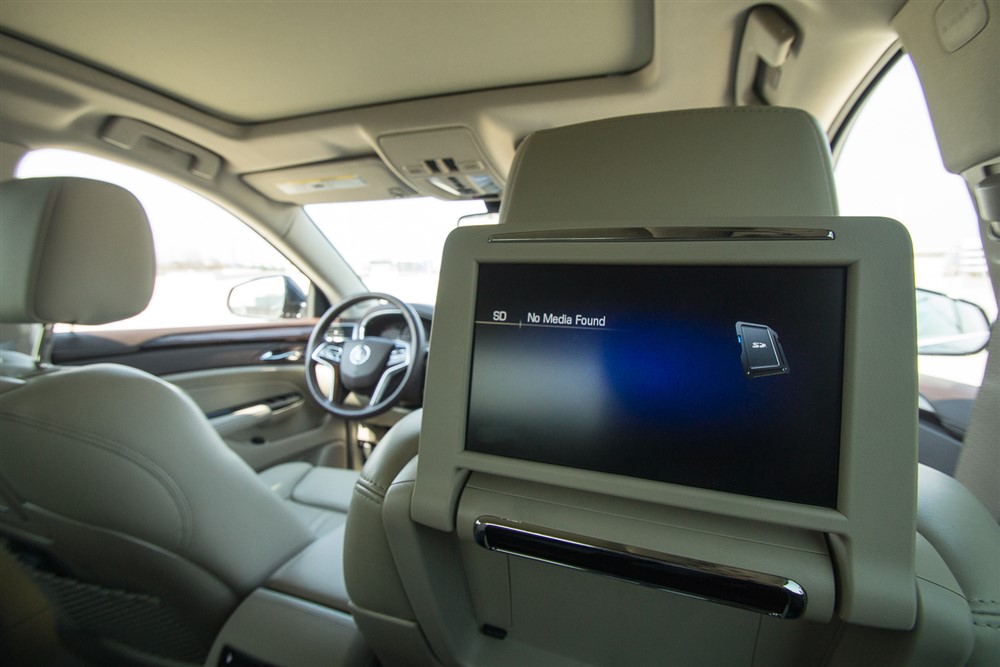The Cadillac SRX doesn’t quite promote itself as the brash, image-heavy bruiser that the Escalade is, but instead follows the more traditional path to what Cadillacs have been known to be. While they have been very busy lately reshaping their image with the likes of the ATS and CTS sport sedans, the SRX doesn’t make any such claims. The original SRX, from 2004 to 2009, was an interesting product. It built on GM’s rear-drive Sigma platform. The rear-drive architecture and dynamics were interesting from an enthusiast standpoint – the original SRX with its available 4.6L Northstar V8, went up against the likes of the Porsche Cayenne and Infiniti FX.
The second-generation SRX takes a step back from its former performance roots and focuses more on comfort, luxury, and following a new trend – gadgets. Built in Mexico, based on the GM Theta platform, nearly everything has changed. Shrunken in most dimensions, and no longer available with V8 power, the new SRX shares a large of its architecture with the Chevy Equinox, GMC Terrain, and even the departed Saab 9-4X. I picked up the remote key to a 2014 Cadillac SRX Premium, with all-wheel-drive. The Premium package adds satellite navigation, Bose surround sound audio, heated and cooled front seats, sport suspension with variable damping, HID headlamps with adaptive control, front collision warning (with tactile driver’s seat feedback), blind spot monitoring… the list goes on. The bottom line is: this SRX is loaded to the gills with gadgets and tech toys.
The exterior design follows Cadillac’s Art & Science design philosophy. Lots of straight-lines and intersecting angles makes the SRX look a little like the outgoing second-generation CTS. While the CTS, ATS, and new Escalade are enjoying today’s critical acclaim for their modern styling cues, the SRX carries on the previous design language. It’s in need of an update to bring it up to speed with its Cadillac siblings, but I wouldn’t call it totally out of date. The large chrome 20-inch wheels do a good job filling up the wheel wells. The side profile of the SRX manages to make it look smaller than it actually is, thanks to the multitude of varying creases and angles. The rear 3/4 angle is my favourite – Cadillac’s signature vertical taillights dominate the rear of the truck.
Inside, you’re greeted with a fairly conventional corporate GM interior, dominated by the CUE (Cadillac User Experience) interface that lives in the centre console. The standard (heated) GM steering wheel is fully equipped with lots of buttons, and the chrome accents match well with the rest of the trim inside. The accelerator and brake pedals are even adjustable. The seats are comfortable for long trips, and you have the option of extending the thigh support. CUE’s heavy reliance on touch-screen inputs has been the point of contention for many. Instead of physical buttons, the entire section is controlled by resting your finger over the text representing the desired function. The panel provides some tactile feedback (audible, too) to confirm your selection.
The process isn’t as slow as it initially seems, but quite a bit of hand-eye coordination is required to confidently change climate control settings, for example. GM took a big risk by implementing the CUE interface. Considering how nearly everybody is armed with a smartphone and a tablet computer of sorts, I don’t really blame GM for wanting to get into the game. A lot of gadgets nowadays employ some sort of multi-touch input – how hard can it be to put into a car? The issue here is how it translates to being the car’s main infotainment interface. The wheels and knobs of the past can generally be operated without taking your eyes off the road. Thankfully, there remain a great deal of physical buttons on the steering wheel that allow the driver to control the audio system – something you play with a lot anyway. Voice commands are another way to interact with the car. Fun fact: the SRX is one of the few cars I’ve played with that confidently supports pinch-to-zoom gestures in the satellite navigation function.
CUE aside, the interior is a comfortable place to spend time. Ample shoulder and headroom with very generous helpings of soft-touch plastics add to the premium feel. My favourite item is the cargo management system, which employs an adjustable aluminum fence that rides in a rail system. It’s very easy to organize and secure all your stuff, essentially in an unlimited number of configurations.
The collision warning system isn’t a new feature nowadays – it is trickling down to more pedestrian makes and models. What makes Cadillac unique is how the system warns the driver. In addition to the red visual warning from the windshield, the seat bottom itself vibrates violently, in the hopes of getting your attention so you can stop the car safely. It is sure to get the driver’s attention, but it can also serve as an effective wake-up call as the SRX demands your attention.
Under the hood lives the widely-used GM 3.6L gasoline V6 engine. Direct-injected with variable valve timing, it produces 308 horsepower and 265 lb-ft of torque. It’s a reasonably smooth engine, but GM doesn’t employ any tricks to improve the sound under high load. The downside here is that this engine has a lot of weight to pull. The SRX is over4400lbs, which is a lot of weight to pull, so acceleration can only be considered to be adequate. Power is sent from the transversely-mounted V6 through a six-speed automatic transmission to the front wheels, unless you opt for the all-wheel-drive option. This is a reactive all-wheel-drive system that will only shuffle power to the rear axle once the computers sense a loss of traction at the front axles.
Cadillac rates the SRX at 13.2L/100km in the city, 8.8L/100km on the highway. In a week of mostly city driving, I was only able to manage 13.8L/100km. There is an Eco button near the shifter which did help bring consumption down somewhat on the highway, it also dulled throttle response as most cars do with this feature. With the engine working so hard to motivate so much weight, I expected fuel efficiency to take a bit of a hit.
The SRX is in a tough segment, populated with the likes of the Lexus RX350, Audi Q5, BMW X3, Infiniti QX70 – the list goes on. Some are more affordable, some provide more horsepower, where some provide a different kind of brand cachet. The elephant in the room for me is the Lexus RX350. While it also has been on sale for quite some time, Lexus has done a good job keeping it up to date, with new trim levels and updated powertrains. The RX350 is also more efficient, too. Audi and BMW have also recently refreshed their midsize SUVs, with turbo-four power that improves efficiency and driving dynamics.
What I think Cadillac wanted to focus on was gadgets. The base SRX stickers for $55,640 – right in the thick of the segment. The Premium Collection adds $6,485, and the Driver Awareness Package asks for another $2,495. My test car stickered at $62,225 before dealer and registration fees. This SRX does excel at driver comfort, the sheer amount of toys available (learning curve of CUE not withstanding), and the ability to somewhat stand out in the sea of white BMW X3’s and Mercedes-Benz X4. To some, that’s an important point worth considering. I’m really looking forward to what Cadillac brings to the table with the next SRX. If it’s anything like the new ATS and CTS, the competition will have good reason to be worried.
Second Look: 2014 Cadillac SRX Gallery






